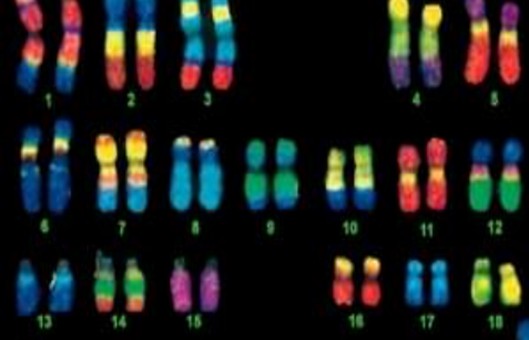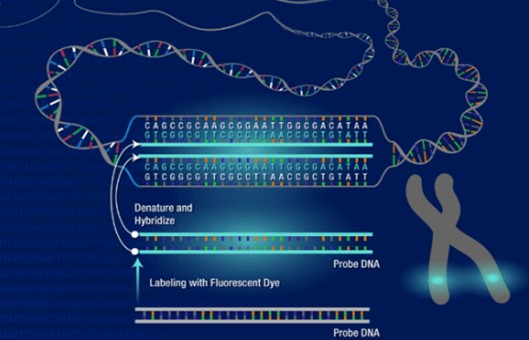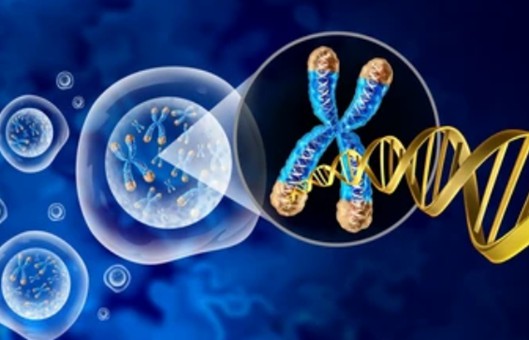GUIDELINE
- Telomere length influences numerous cellular processes such as senescence, carcinogenesis, and aging. Quantitative FISH (Q-FISH) is a comprehensive method that allows the measuring of individual chromosome telomere length in a single cell with a resolution of 200 base pairs.
- The method is based on the use of a peptide nucleic acid (PNA) telomere oligonucleotide probe and appropriate digital image software for the capture and quantification of fluorescence signals. The length of the telomere is directly related to its integrated fluorescence intensity, as PNA probes are assumed to hybridize quantitatively to telomeric repeats.
METHODS
Slide preparation
- Age slides 1.5 h at 60°C or overnight at 55°C.
- Pretreat the slide (procedure as for conventional FISH).
Fluorescence in situ hybridization (PNA FISH)
- Put 20 μl slide-1 of hybridization mixture [ready-to-use PNA telomeric Cy3-labeled probe supplemented by the centromeric probe for chromosome 2 (valuable on request from DACO) in final concentration 2 ng ml-1 and then put on the coverslip (22 ×50 mm)].
- Heat slides at 70°C for 2 min only.
- Leave in the dark, damp container for 2 h.
Post-hybridization washes in the dark
- Put slides two times 15 min in 70% formamide solution (in dark coupling jars and with no shaking).
- Put slides three times 5 min in 1×PBS (in dark jars and on the shaker).
- Dehydrate slides in ethanol series (70%, 90%, 100%) for 5 min each.
- Add 15 μl of VECTASHIELD/DAPI and cover with 22×60 mm coverslip and fix it on nail varnish.
- Slides are now ready to be observed under the microscope.
Detection
- For quantification of telomere length by Q-FISH, fluorescent reference beads of defined size (i.e., 1 μm) are imaged before target samples using a camera linked to the ISIS software as an internal control of fluorescent intensity.
- Afterward, metaphases are captured with individual excitation filter sets for DAPI and Cy3 and automatically saved with each image's color channels. Chromosomes of merged images are separated and transferred to the karyotype window.
- Fluorescence intensity values of beads are then used to correct the fluorescence intensities of telomere samples. This allows fluorescence intensity values to be converted into units of DNA length.
Creative Bioarray Relevant Recommendations
- Creative Bioarray provides Q-FISH-based telomere analysis, to help our customers study molecular mechanisms related to telomere length regulation, cell cycle, cell lifespan, and more. Our service can be used to determine telomere length (p and q arms) in a given cell, the intrachromosomal distribution of the longest/shortest telomeres, and others.
NOTES
- If TFL-TELO software is used, results are expressed in telomere fluorescence units (TFU), with each unit corresponding to 1 kb of telomere repeats.
- It likely has the best resolution when used with centromere normalization. The use of a very long telomere length "high" calibration standard (if telomere length distribution is wide) for telomere intensity control can interfere with correlations and makes it difficult to obtain precise results. The centromere/telomere normalization method helps avoid these obstacles.
RELATED PRODUCTS & SERVICES


